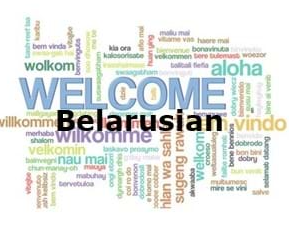Belarus, located in Eastern Europe, is a country with a unique history, culture, and language. While Russian is widely spoken and dominates the media, Belarusian is the Belarus National Language. In this article, we will explore the richness and significance of Belarusian, its history, grammar, vocabulary, and the challenges it faces in the modern world. We will also answer some common questions about Belarusian language and provide references for further reading.
History of Belarus National Language
Belarusian language has a long and fascinating history, rooted in the Slavic languages and influenced by the neighboring countries such as Poland, Lithuania, and Russia. The first written records of Belarusian date back to the 12th century, but the language was primarily used for oral communication and folklore until the 19th century. In the 20th century, Belarusian became an official language of Belarus and underwent standardization and modernization.
Grammar of Belarus National Language
Belarusian grammar is complex and sophisticated, with many features that distinguish it from other Slavic languages. Here are some key aspects of Belarusian grammar:
Alphabet and Pronunciation
Belarusian uses the Cyrillic alphabet, consisting of 32 letters. The pronunciation of Belarusian is phonetic, meaning that each letter represents a distinct sound. Some letters, such as Ў (ŭ) and І (i), are unique to Belarusian.
Nouns, Adjectives, and Pronouns
Belarusian nouns have six grammatical cases, each with its own suffix and meaning. Adjectives and pronouns agree with nouns in gender, number, and case. Belarusian also has a dual number, used for referring to two objects.
Verbs and Tenses
Belarusian verbs have three aspects (imperfective, perfective, and iterative) and six tenses (present, past, future, conditional, imperative, and infinitive). The conjugation of verbs depends on the person, number, and tense.
Vocabulary of Belarusian Language
Belarusian vocabulary is rich and diverse, reflecting the country's history, culture, and geography. Here are some interesting aspects of Belarusian vocabulary:
Loanwords and Neologisms
Belarusian language has borrowed words from various languages, including Russian, Polish, German, and English. In recent years, there has been a trend towards creating new Belarusian words, especially in the fields of science, technology, and culture.
Colloquialisms and Slang
Like any living language, Belarusian has its own colloquialisms and slang, which vary depending on the region, social class, and age group. Some of the most common colloquial expressions in Belarusian are "здарова" (zdarova, hello), "цікава" (tsikava, interesting).
Regional Variations
Belarusian language has several regional variations, which differ in pronunciation, vocabulary, and grammar. The three main dialects are North-Eastern, Central, and South-Western Belarusian. The North-Eastern dialect is the most widespread and is used as the standard language in Belarus.
Challenges and Opportunities for Belarus National Language
Despite its rich history and cultural significance, Belarusian language faces several challenges in the modern world. Here are some of the most significant challenges and opportunities for Belarusian language:
Dominance of Russian Language
Russian language dominates the media, education, and business in Belarus, leaving little room for Belarusian language to flourish. Many Belarusians, especially in urban areas, prefer to use Russian in their daily lives, considering it more practical and prestigious.
Globalization and English Language
The rise of globalization and the spread of English language pose a threat to Belarusian language, as more Belarusians choose to learn English as a second language rather than Belarusian. English language is also increasingly used in the fields of science, technology, and business, leaving Belarusian language behind.
Digital Technology and Social Media
The rise of digital technology and social media provides both challenges and opportunities for Belarusian language. On the one hand, digital platforms and devices allow Belarusian language to reach a wider audience and connect with other cultures. On the other hand, they also expose Belarusian language to the dominance of English language and the pressure to conform to global standards.
FAQs about Belarusian Language
- Is Belarusian language similar to Russian language?
Belarusian language is a Slavic language and shares some similarities with Russian language, but they are not mutually intelligible. Belarusian has a distinct grammar, vocabulary, and pronunciation.
- Is Belarusian language spoken outside of Belarus?
Belarusian language is mainly spoken in Belarus, but there are also Belarusian-speaking communities in neighboring countries such as Poland, Lithuania, and Ukraine.
- Can I learn Belarusian language online?
Yes, there are many online resources for learning Belarusian language, including courses, textbooks, and dictionaries. You can also find language exchange partners and join online communities for practicing Belarusian language.
- How important is Belarusian language for the national identity of Belarus?
Belarusian language is an integral part of the national identity of Belarus, reflecting its history, culture, and diversity. Preserving and promoting Belarusian language is essential for maintaining the distinctiveness and richness of Belarusian culture.
- What are some famous Belarusian writers and poets?
Belarusian literature has a long and rich tradition, with many notable writers and poets such as Yakub Kolas, Yanka Kupala, Vasil Bykaŭ, and Svetlana Alexievich.
Conclusion
Belarusian language is a fascinating and important part of Belarusian culture and identity, with a rich history, grammar, vocabulary, and regional variations. While facing several challenges in the modern world, Belarusian language also presents many opportunities for growth and development. By preserving and promoting Belarusian language, we can celebrate the uniqueness and diversity of Belarusian culture and contribute to a more interconnected and harmonious world.
References
- "Belarusian Language" by Paul Brook, Oxford University Press, 2015.
- "Belarusian Language and Culture: A Comprehensive Guide" by Maksim Haretski, Routledge, 2021.
- "The History of Belarusian Language" by Zmicier Sauka, Slavica Publishers, 2010.
